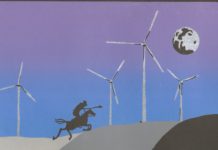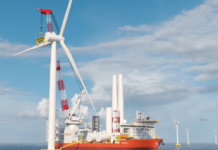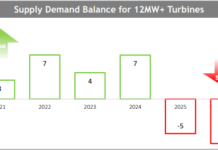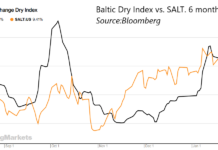A recent study by Emerging Energy Research confirmed what we have been saying about wind power for some time – namely that growth prospects look very strong for the North American market. The study, entitled “US Wind Power Markets and Strategies, 2007-2015“, is not available free of charge but you can access a summary here (PDF document). The US: The World’s Top Dog Here are some of the key takeaways from the summary: a) The US wind power market is expected to grow from 11,000 MW in 2006 to around 49,000 MW by 2015 (for those for whom MW doesn’t mean much, this essentially equates to very solid growth) b) Over $65 billion is expected to be invested in new US wind capacity over the 2007-2015 period c) By 2015, the US will have a 19% share of global installed wind capacity, making it the single largest wind market in the world The study notes that there will be (and currently are) wide disparities in regional wind activity. Texas, California, Minnesota, New York, Colorado, and Washington will together account for around 53% of market growth between 200t and 2015.  Consolidation, Consolidation EER also reports a consolidation trend in the industry, as Independent Power Producers (IPPs) seek to solidify their positions in the market. The study notes that a group of 10 to 15 IPPs is currently emerging from the pack, including strong international alternative energy players such as Iberdrola (IBDRF.PK) and EDP (ELCPF.PK).
Consolidation, Consolidation EER also reports a consolidation trend in the industry, as Independent Power Producers (IPPs) seek to solidify their positions in the market. The study notes that a group of 10 to 15 IPPs is currently emerging from the pack, including strong international alternative energy players such as Iberdrola (IBDRF.PK) and EDP (ELCPF.PK).  We have written in the past about problems with shortages in wind turbine components. EER discusses the intensification of vendor competition in the US wind market. The report notes:”Turbine manufacturing investment in the US has grown markedly in the past two years, with aggressive new entrants now vying with US market veterans GE and Vestas for big name contracts.” Implications for Investors So what does this all boil down to for the public market investor? It’s simple: wind is a good business to be invested in or at least thinking about. The fundamentals look strong, in part because governments are not going to stop supporting it anytime soon, and the industry is fast reaching the kind of scale that will allow wind to be competitive with other forms of electricity generation (especially so as climate change regulations are introduced and CO2 emissions are priced). One more thing: the technology is tried and tested. There are investment opportunities at three main levels: (a) IPPs, which are a relatively safe play on wind as utilities tend to be stable investments; (b) wind turbine vendors, whose order books are full and showing no signs of emptying out; and (c) feedstock providers, such as providers of carbon fiber. Browse through our Wind archives for potential company names. There is, however, one big caveat: watch out for transmission bottlenecks. Problems with grid stability were cited as the reason to put a moratorium on all wind development in the Canadian province of Alberta, and underinvestment in transmission capacity has been a problem across North America. DISCLOSURE: The author does not have any positions in any of the companies discussed above.
We have written in the past about problems with shortages in wind turbine components. EER discusses the intensification of vendor competition in the US wind market. The report notes:”Turbine manufacturing investment in the US has grown markedly in the past two years, with aggressive new entrants now vying with US market veterans GE and Vestas for big name contracts.” Implications for Investors So what does this all boil down to for the public market investor? It’s simple: wind is a good business to be invested in or at least thinking about. The fundamentals look strong, in part because governments are not going to stop supporting it anytime soon, and the industry is fast reaching the kind of scale that will allow wind to be competitive with other forms of electricity generation (especially so as climate change regulations are introduced and CO2 emissions are priced). One more thing: the technology is tried and tested. There are investment opportunities at three main levels: (a) IPPs, which are a relatively safe play on wind as utilities tend to be stable investments; (b) wind turbine vendors, whose order books are full and showing no signs of emptying out; and (c) feedstock providers, such as providers of carbon fiber. Browse through our Wind archives for potential company names. There is, however, one big caveat: watch out for transmission bottlenecks. Problems with grid stability were cited as the reason to put a moratorium on all wind development in the Canadian province of Alberta, and underinvestment in transmission capacity has been a problem across North America. DISCLOSURE: The author does not have any positions in any of the companies discussed above.







